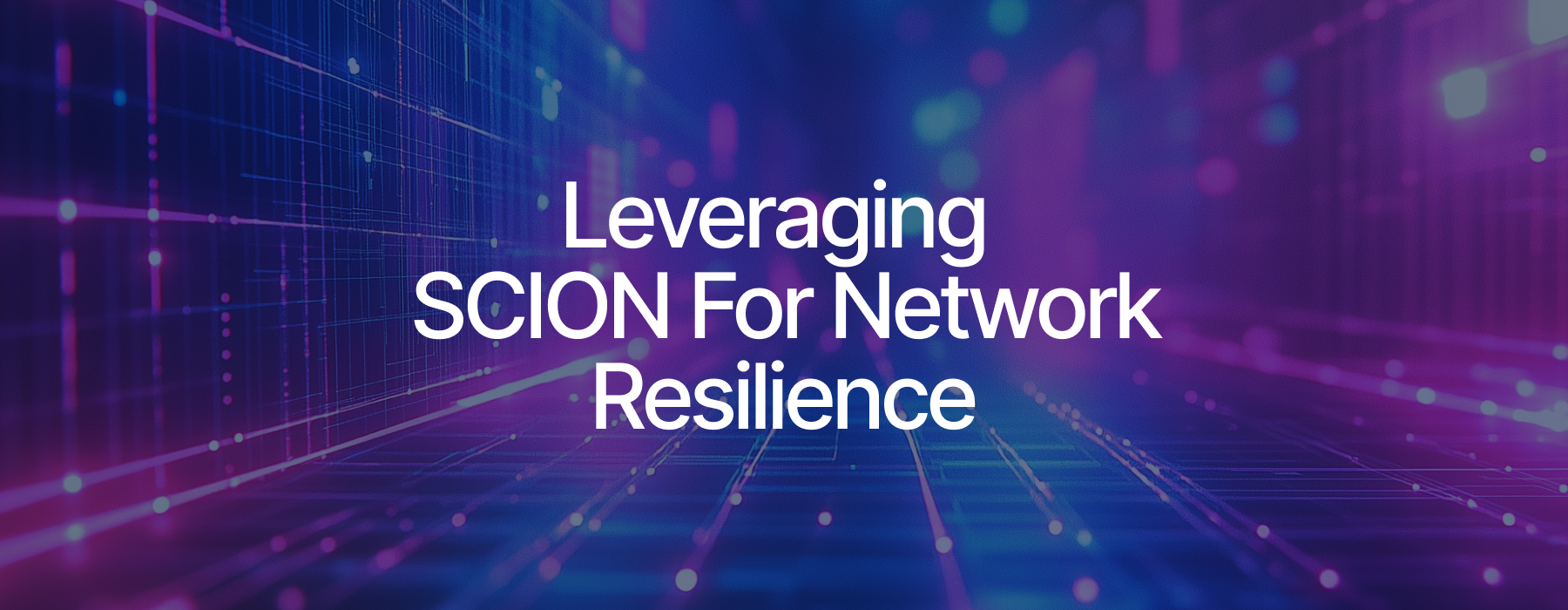Sui Advances Network Security and Performance with Scion
Next-gen network security is coming to Sui with SCION’s path-aware, attack-resistant architecture.

Sui is integrating SCION to enhance network security, reliability, and performance. SCION’s next-generation internet architecture will improve Sui's validator communication, reduce vulnerabilities like BGP hijacking, and ensure uninterrupted operations, providing a more resilient foundation for Sui’s infrastructure.
SCION, which stands for Scalability, Control, and Isolation On Next-generation networks, is a clean-slate internet architecture developed to provide route control, failure isolation, and explicit trust information for end-to-end communication. Unlike traditional internet protocols, SCION offers path-aware networking, allowing entities to select and control their network paths for optimal performance and security.
SCION was built from a clean slate, unlike today’s internet, which evolved by layering new protocols on top of others, repairing inherent weaknesses rather than eliminating them. Border Gateway Protocol (BGP) and Internet Protocol (IP) were designed for connectivity, not security. Over time, patches and workarounds have been added to address vulnerabilities, but these rarely result in true solutions and instead are simply fixes to the inefficient architecture. SCION has been built from the ground up with security, reliability, and route control as core principles, ensuring data follows verified, efficient paths instead of blindly trusting the network to select a route to the destination.
How SCION improves network reliability
Think about the last time you used a navigation app to get somewhere. You expect it to provide the best route, one that is fast, safe, and efficient. But what if it didn’t? What if the app relied on an outdated and unpredictable system, sending you on unnecessary detours or through unsafe areas? Worse, what if bad actors could manipulate your route, slowing you down or exposing your data? You have no real control over the information guiding your journey.
Today’s internet works like an outdated navigation app. Most online communication, including blockchain networks, relies on BGP and IP—systems built for connectivity, not security. Just as a compromised navigation app could unknowingly lead you into a bad route, BGP hijacking allows attackers to silently redirect traffic, exposing data or disrupting services. Users have little control over how their data moves, and failures in one part of the internet can ripple outward, causing cascading outages elsewhere.
When roadblocks appear, a well-designed navigation system reroutes without causing gridlock. Failure isolation in SCION ensures disruptions stay contained, unlike in today’s internet, where failures can easily cascade. SCION guarantees that unaffected parts of the network remain operational, just as an effective navigation app quickly finds an alternate route when an accident blocks the road.
SCION also enforces explicit trust information, so every participant knows who is handling their traffic—akin to verifying who maintains the roads and toll booths before trusting a route. On today’s internet, data often passes through untrusted intermediaries with no transparency. SCION eliminates this uncertainty by making trust relationships clear and enforceable.
SCION also offers path awareness—ensuring data knows exactly where it’s going and who is handling it while ensuring the route is optimized for security and performance. Unlike today’s internet, where data takes unpredictable paths, SCION can help ensure communication happens over verified, efficient, and attack-resistant routes.
Traditional blockchain network architectures
Blockchain networks rely on a mix of traditional internet protocols and peer-to-peer (P2P) communication to function. At their core, blockchains use IP-based networking for general data transmission, similar to how websites and online applications communicate. P2P networks layer on top of this, enabling decentralized node discovery and direct messaging between participants. This structure allows validators and other nodes to exchange transactions, sync state, and participate in consensus.
While this model has powered blockchain networks for years, it comes with inherent weaknesses. BGP hijacking, one of the biggest vulnerabilities, allows attackers to manipulate internet routing, redirecting validator traffic to disrupt consensus or extract sensitive data. Beyond security risks, blockchains also face performance bottlenecks, where congested or inefficient routing slows down network communication, leading to delayed transaction finalization. In extreme cases, failures in core internet infrastructure can take entire networks offline, creating single points of failure that threaten decentralization.
For a decentralized system like Sui, maintaining high reliability and uptime is critical. Validators need continuous, uninterrupted communication to ensure consensus remains stable. A single validator going offline may weaken network security, while widespread failures can paralyze the entire system. The solution is resilience, which requires fallback mechanisms and alternative networking solutions to keep blockchain infrastructure running even if primary routes fail.
Sui’s integration of SCION
Sui is taking a proactive approach to network reliability by integrating SCION alongside its existing internet-based and P2P communication channels. This dual-layer approach ensures validators can communicate securely, even when traditional internet routing is compromised.
By leveraging both SCION and traditional internet channels, Sui introduces built-in redundancy, allowing the network to stay operational despite attacks or outages. SCION acts as an alternative pathway, ensuring uninterrupted validator communication while improving security and performance.
Key benefits for Sui
- Resilience against network attacks: Protects validators from BGP hijacking and other routing attacks, reducing the risk of network disruption.
- Reliable validator communication: Ensures uninterrupted connectivity, keeping consensus stable even if internet infrastructure is compromised.
- Optimized performance: SCION’s path-aware routing allows validators to choose the most efficient routes, reducing latency and improving transaction finalization times.
- Decentralization and security: Strengthens Sui’s validator network by reducing reliance on brittle routing mechanisms, enhancing overall security and stability.
- Redundant failover mechanism: Provides an alternative networking layer that can take over during outages, ensuring continuous blockchain operations.
Network future-proofing
SCION’s network has already scaled to over 100K nodes worldwide, connecting critical infrastructure across healthcare, education, and research. As this rollout progresses, its expanding adoption is reinforcing secure, high-performance networking across multiple industries, including blockchain technology.
To meet the growing demands of security, reliability, and scalability, blockchain networks must evolve. Sui’s integration of SCION represents a quantum leap in this direction, strengthening decentralized systems against both known and emerging threats. By enhancing validator communication with secure, path-aware networking, Sui is not just improving today’s network operations but also laying the foundation for the evolution of blockchain infrastructure.

